This page contains affiliate links. Please read our disclosure for more info.
Burma (or Myanmar) is unlike anywhere else we have travelled. Sitting between India and Thailand we found elements of both – the gentle Buddhism of Thailand mixed with the chaotic street scenes of India. But most of the sights, smells, tastes and experiences were completely new to us. These are some random observations from our time travelling around the country.
Politics
1) Burma has been ruled by a brutal military dictatorship for 50 years but the oppression of its people is hidden from view and the average traveller won’t see any signs of it. There are only occasional hints when talking (cautiously) to local people.
2) In the last year some positive changes have taken place – many political prisoners have been released and censorship has eased. The most outward sign of a changing political climate are the previously illegal posters of pro-democracy leader Aung San Suu Kyi now found on walls of restaurants and tea shops everywhere.
3) We were lucky enough to be in Burma for Aung San Suu Kyi and her party the National League for Democracy (NLD)’s victory in the by-elections. It was the first free and fair election in the country in over 50 years, and although the NLD only has 6.4% of the seats in parliament the people we spoke to were jubilant and very hopeful for big changes in the country.
4) In 2005 the military government unexpectedly moved the official capital 200 miles north of the previous capital Yangon where they created a new city Nay Pyi Taw. The move was widely condemned as expensive and wasteful.
5) Power cuts are annoyingly frequent. The government’s line is that the hydroelectric power is affected by water shortages in the dry season, but a local we talked to said this didn’t explain why the new capital is still bright with street lights on its empty roads.
6) There are no ATMs in the country so travellers must bring all of their money in US dollars. Notes must be pristine to be accepted – no bends, creases, tears or marks.
People
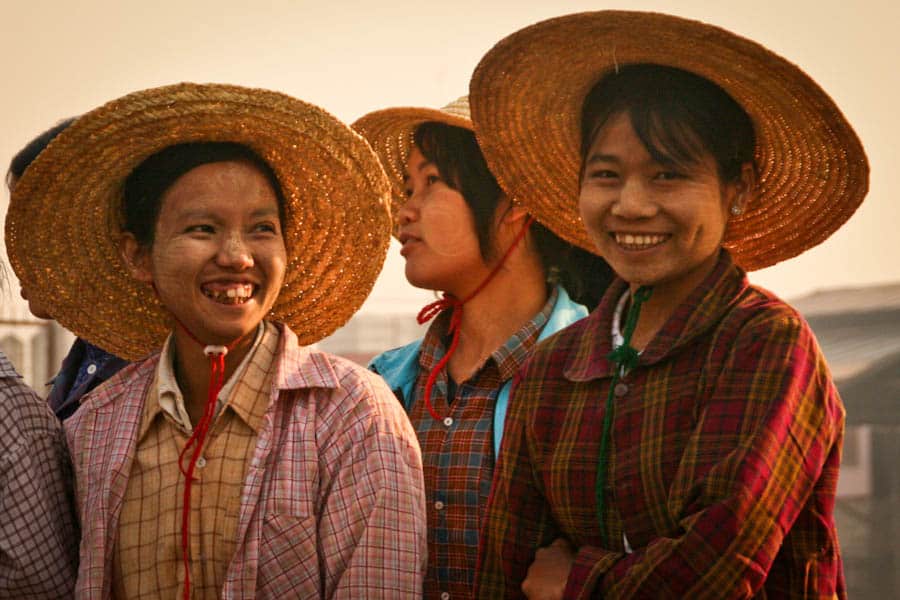
7) The Burmese people were a highlight of our trip – friendly, welcoming, and often very excited to meet us. We were smiled at and chatted to, pointed and waved at, and occasionally hysterically laughed at (that may have been our attempts to speak Burmese).
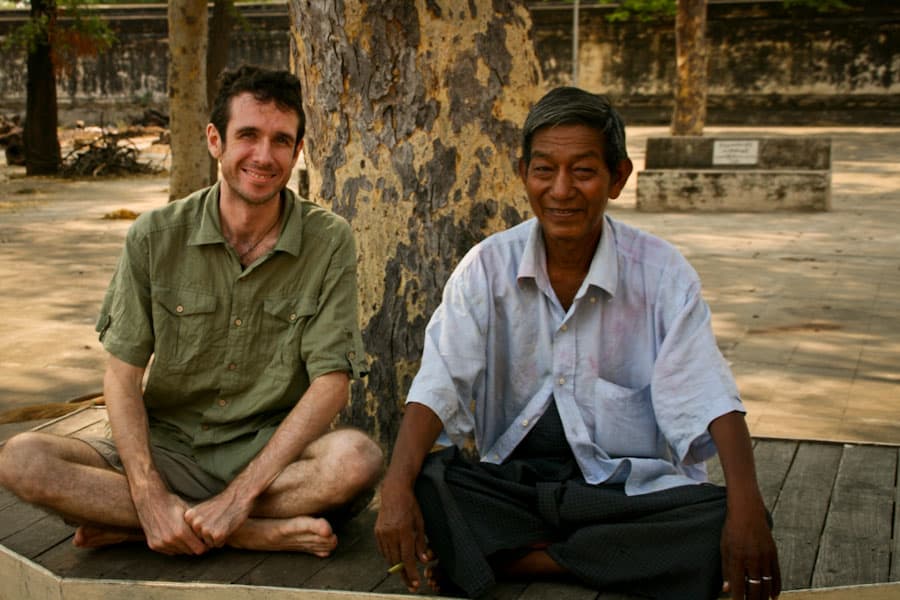
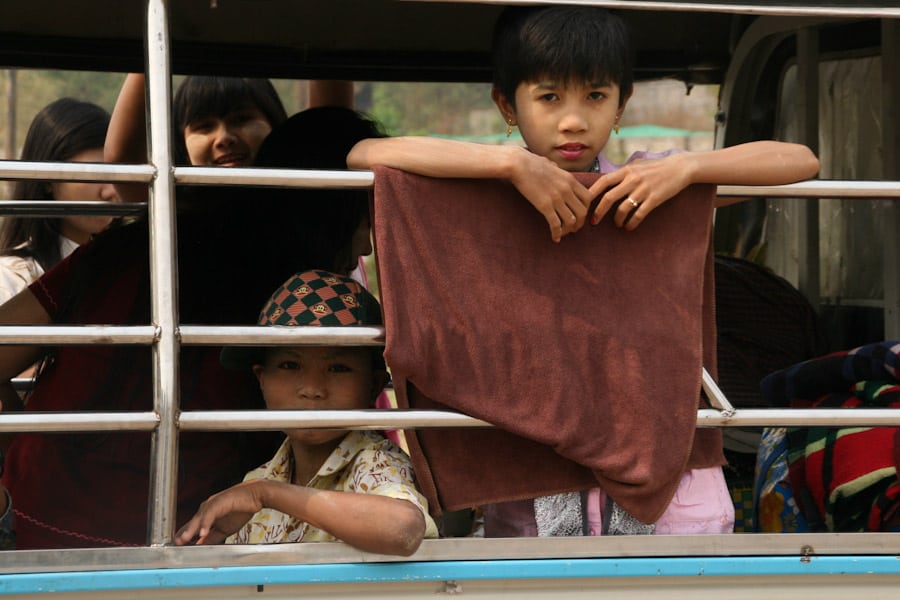
8 ) Groups of people loved having us take their photo.
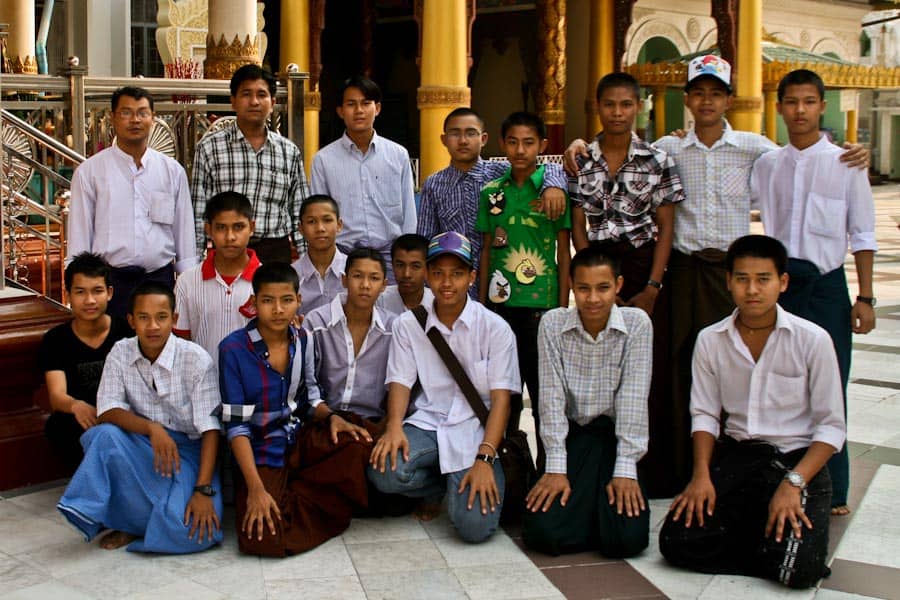
9) The most common item of clothing is the longyi – both men and women wear these colourful sarongs.
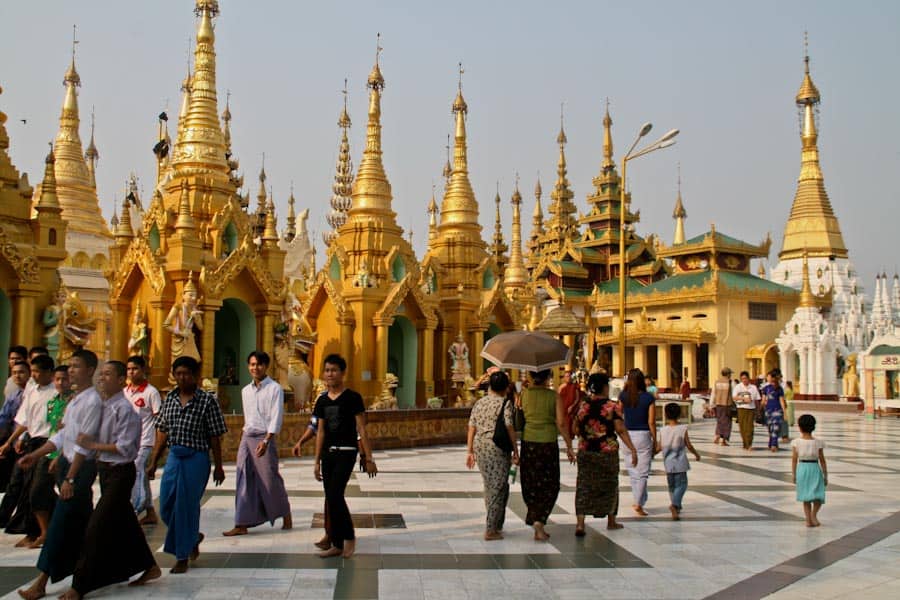
10) Women’s faces are smeared with thanaka, a paste made from ground bark that protects from the sun and acts as makeup with many different designs.
11) Burmese people are obsessed with English football. Huge crowds watch all the games in smoky tea shops and telling people we were from Manchester or England always elicited big smiles and cries of “great football!”
12) The Burmese love chewing betel. A tiny stand is located on every street corner with the ingredients laid out – small pieces of areca nut, tobacco and spices are wrapped in a green betel leaf pasted with slaked lime, folded up, and popped in the mouth. The resulting blood red juice is splattered on pavements and stains people’s teeth everywhere.
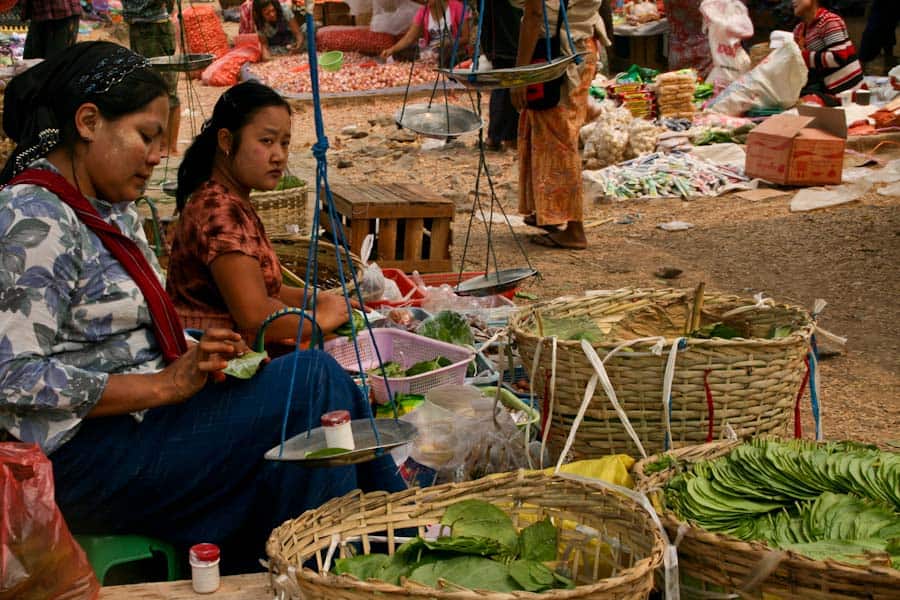
13) People also love smoking cheroots – cigars wrapped in green leaves.
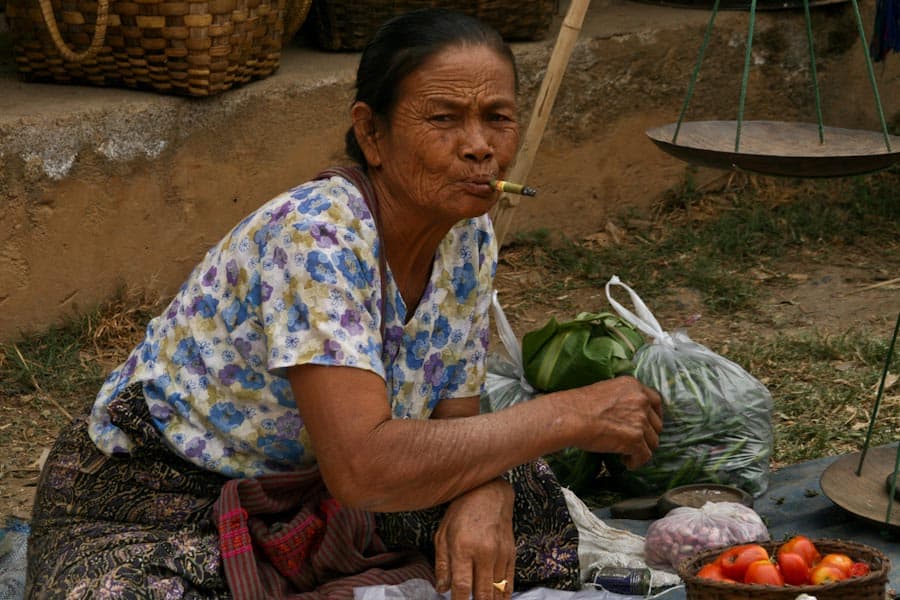
14) Burmese women have an impressive ability to carry heavy loads on their heads.
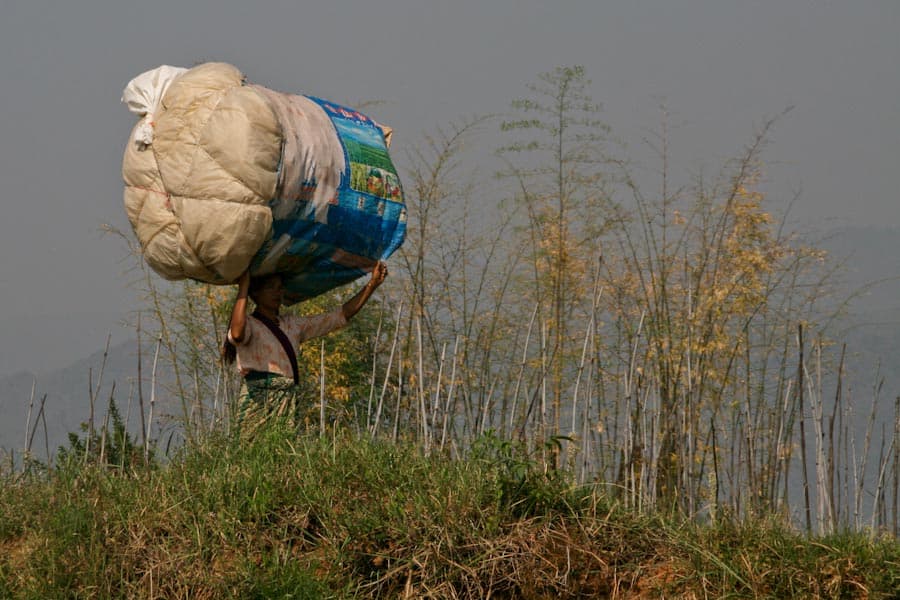
15) Fishermen at Inle Lake row their dugout canoes with one leg wrapped around a paddle, balancing on the end of the boat with the other, leaving their hands free to cast nets.
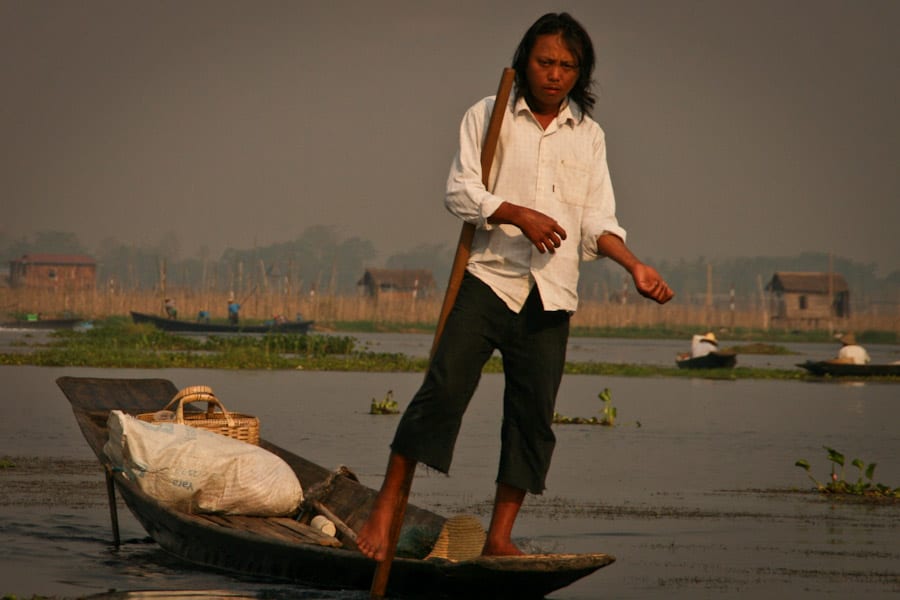
16) Child monks seem more common than adults and all wear maroon robes, in contrast to the saffron of neighbouring Thailand. At dawn you’ll see them walking in a neat line to collect alms.
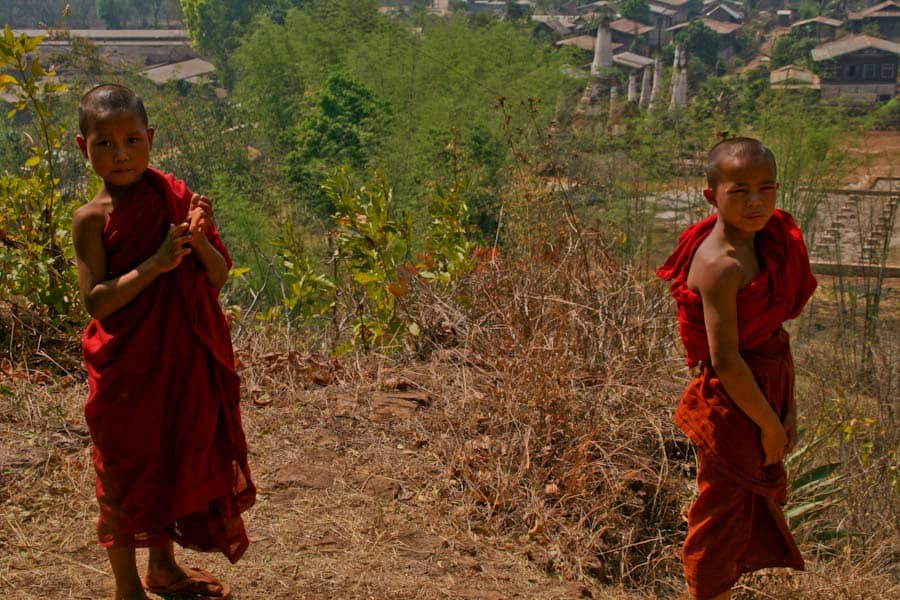
17) Squares of gold leaf are applied to Buddha images as a way of making merit. Some sacred statues have had so much gold leaf applied that they are now unidentifiable.
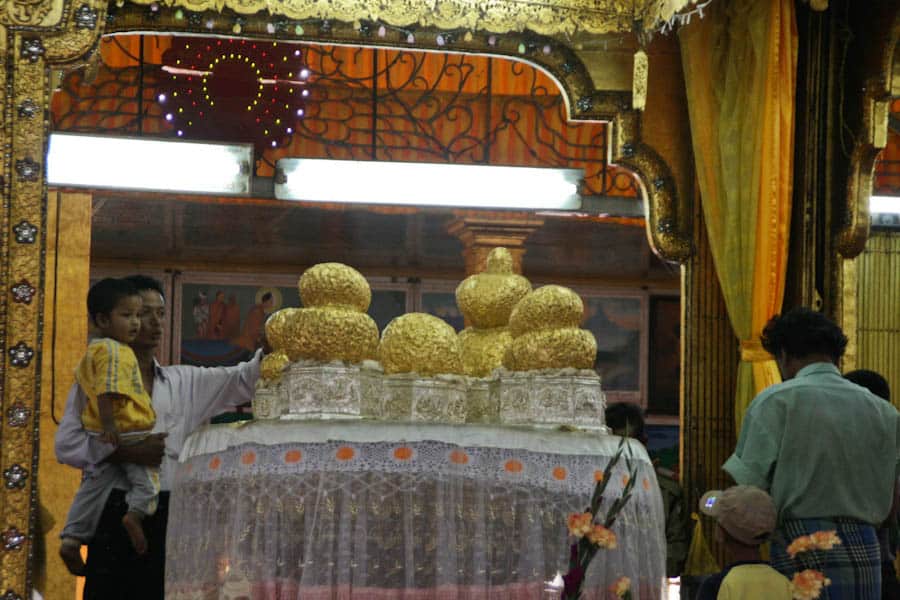
Food
18) Tea shops are to Burma what pubs are to England. They are places to chat, drink, eat, and watch sports.
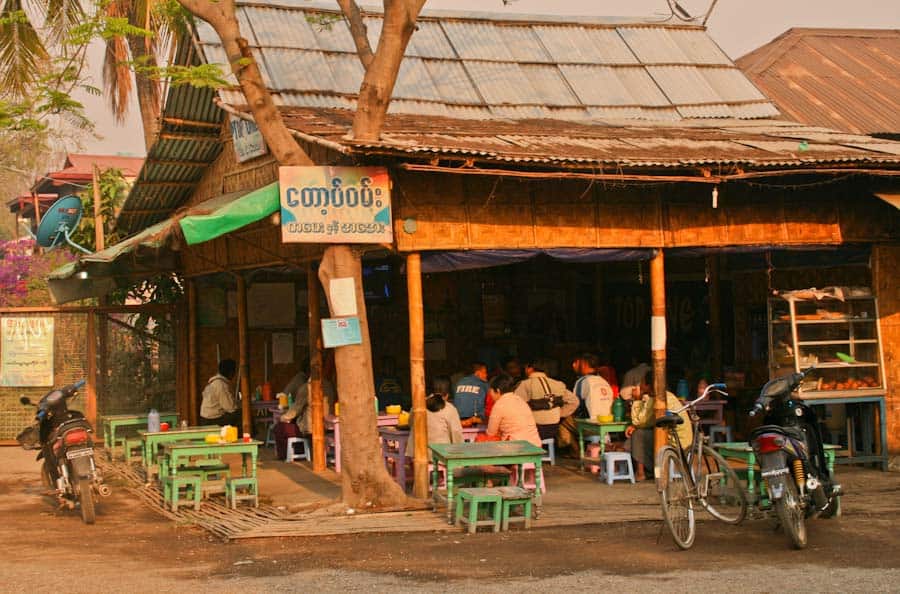
19) Seating in tea shops and food stalls is on tiny child-size stools.
20) Burma is one of the few countries where tea is eaten as well as drunk. Pickled tea is served with sweet jaggery as dessert, or mixed by hand with fried peas, peanuts, garlic, toasted sesame, garlic, tomato, chilli and lime to make the delicious lahpet thoke (tea leaf salad).
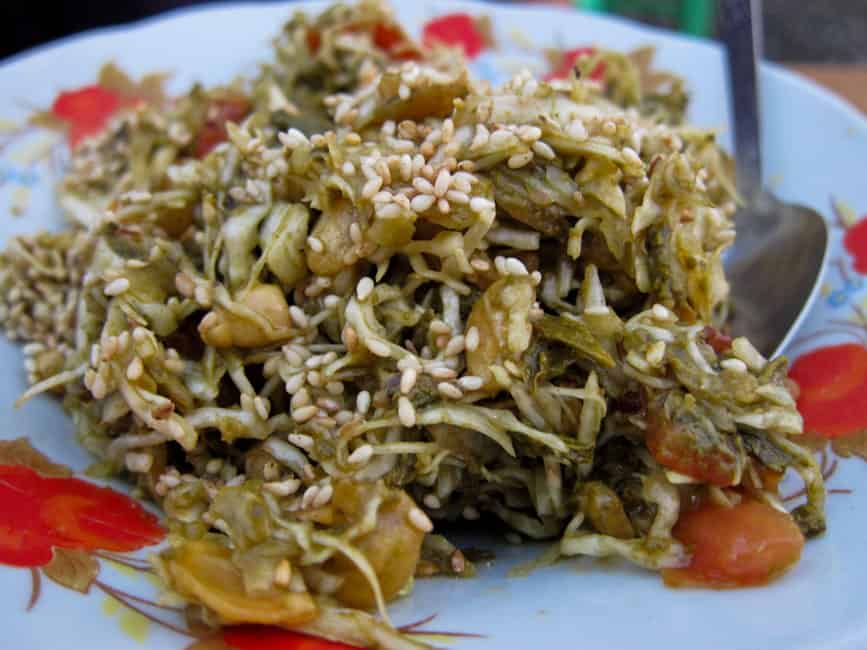
21) Noodles are eaten with chopsticks but other meals are eaten with a spoon in the right hand and a fork in the left which is used to push food onto the spoon.
22) Green Chinese tea is served in tiny cups for free at restaurants, food stalls and tea shops (you pay for the sweet black milky tea).
23) The Indian influence means that Indian food is common – we loved the all you can eat thalis for $1.20 and samosas and other fried street snacks.
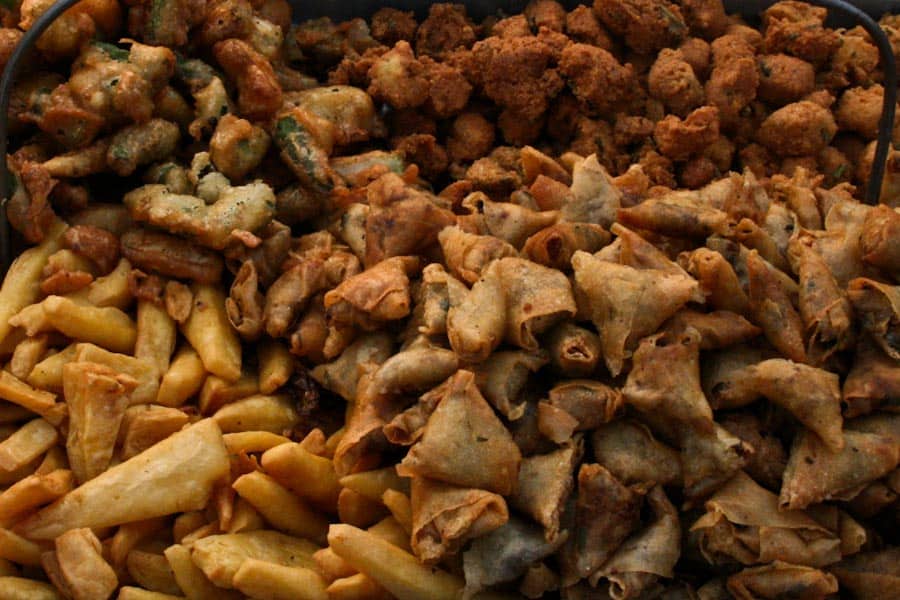
24) There are no Western chain stores or restaurants in the country.
Transport
25) Trishaws are different from those elsewhere in Asia – there are two back to back seats next to the bike, one facing forward and one backwards. They are usually ridden by longyi-clad, wiry old men.
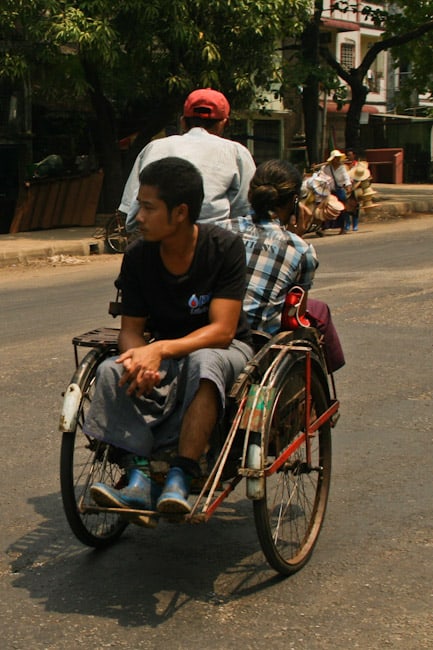
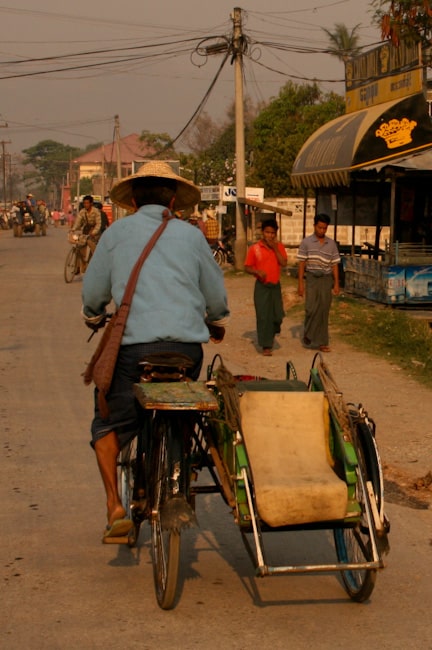
26) Horse cart is a common form of transportation in small towns.
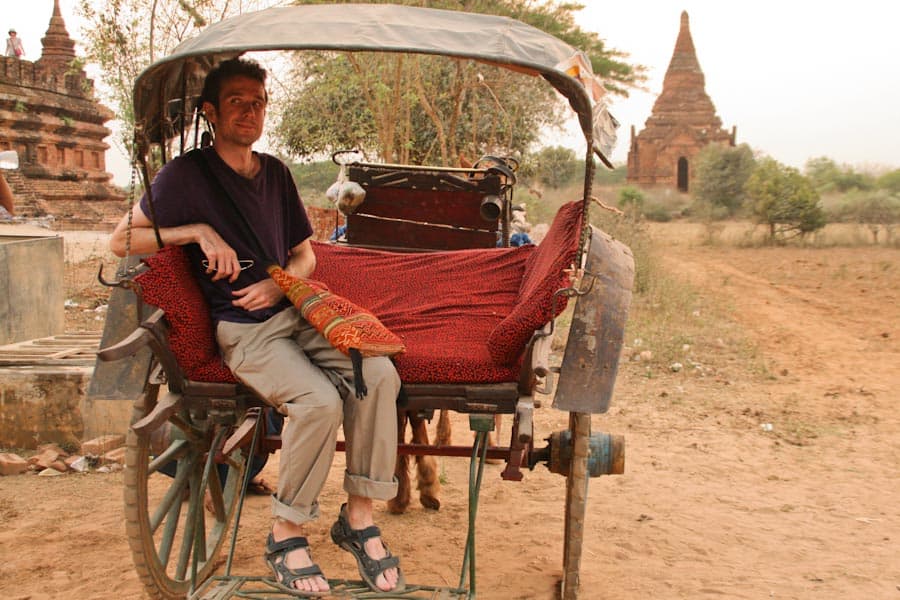
27) Bullock carts are used as transportation in rural areas and we saw young boys riding, walking and washing their buffalos.
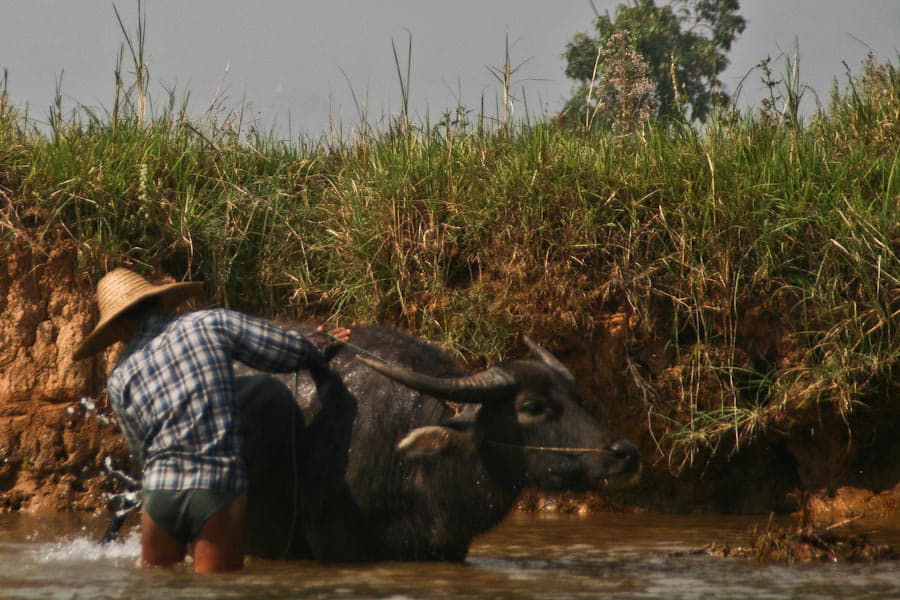
Street Scenes
28) Clay pots of water with cups are found on street corners everywhere – free for everyone to take a drink.
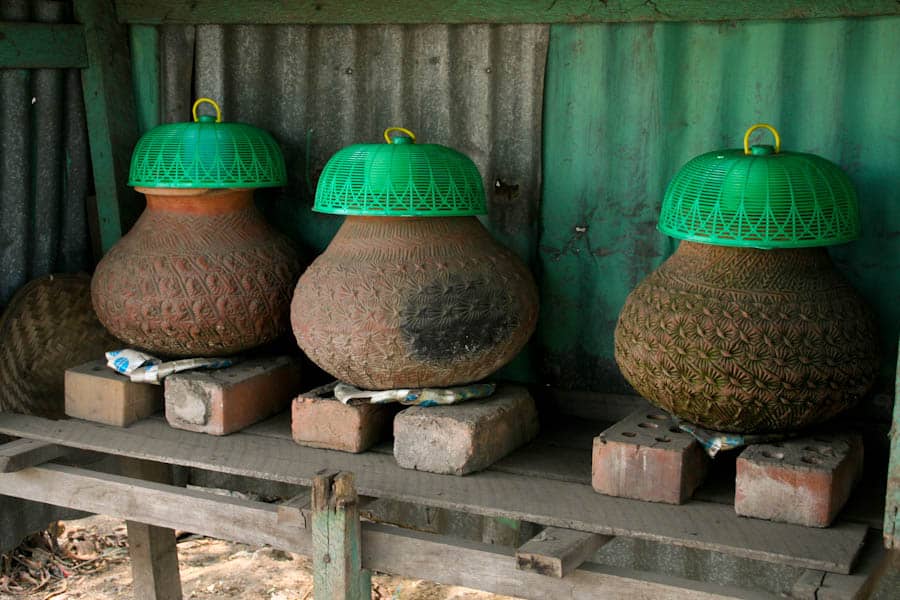
29) Mobile phones have only recently become more popular in Burma. The most common form of communication is the landline phones found on tables on the pavement.
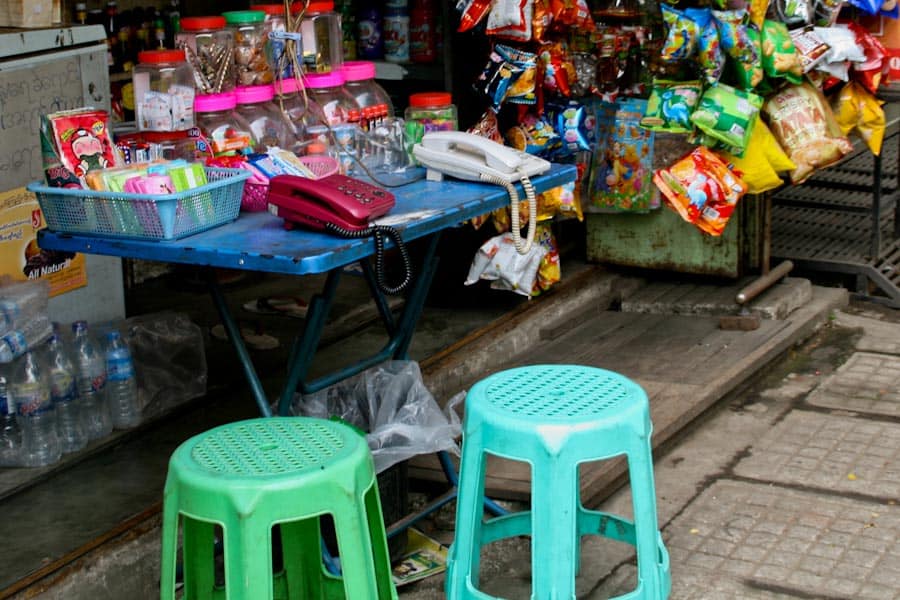
30) Post in Yangon is delivered by clipping it to long ropes which are hoisted up to each apartment.
31) Despite being a poor country there is very little begging.
32) The river is used to wash everything – people, laundry, dishes, buffalo, and even motorbikes.
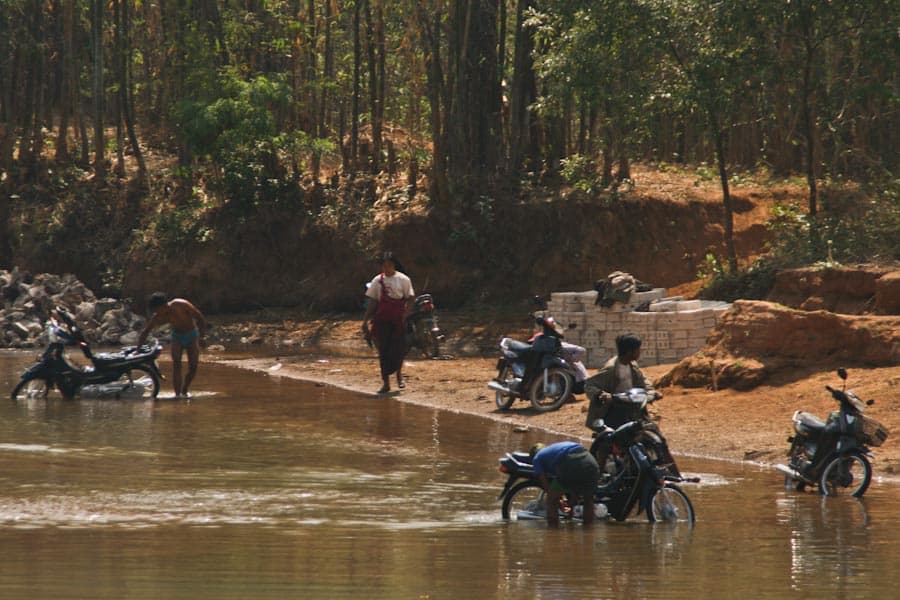
33) There is a TV in every restaurant, tea shop, and even temples.
34) Angry Birds t-shirts and other merchandise are crazily popular.
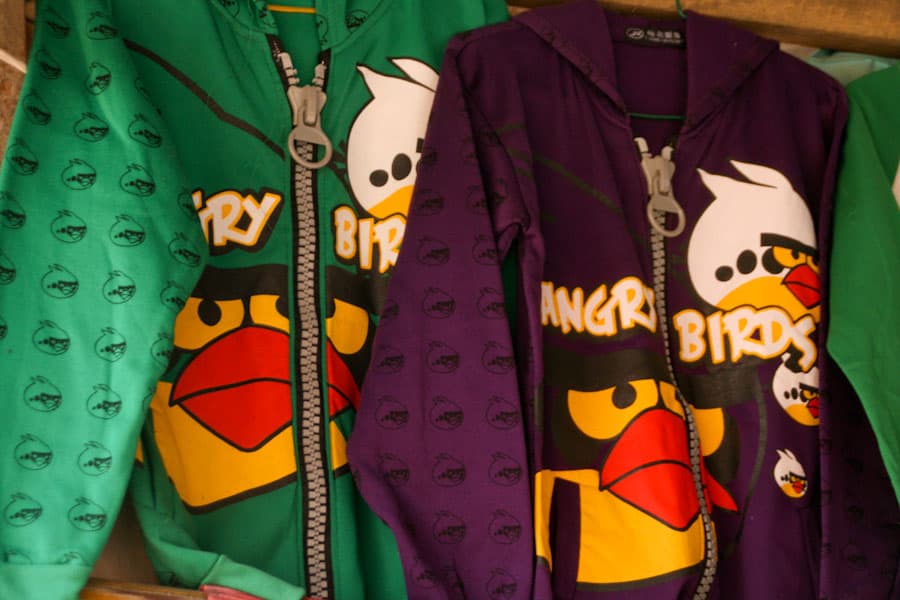
35) Motorbike drivers like to liven up their vehicles – we heard one motorbike play It’s A Small World every time it braked.
If you’d like to visit Burma read our post on how to plan your trip.
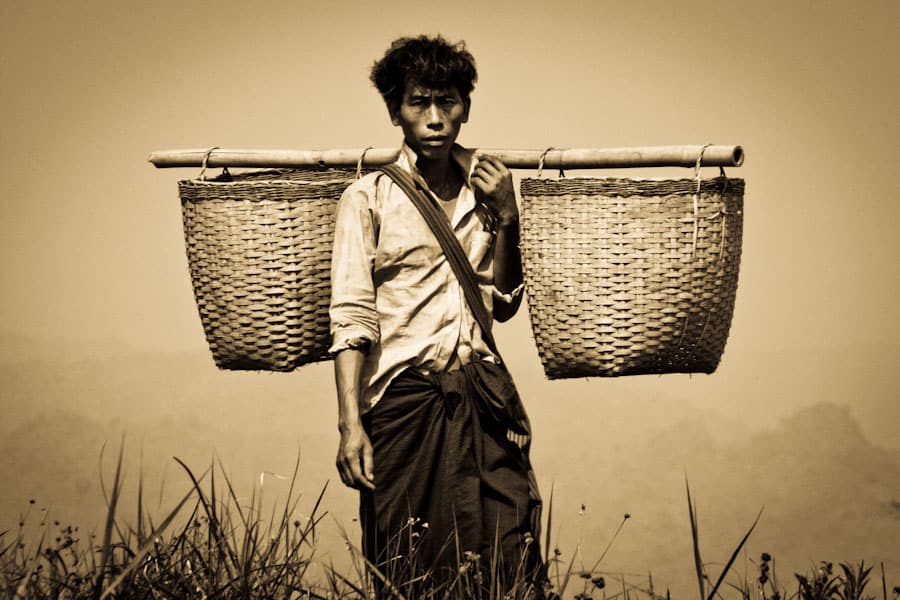
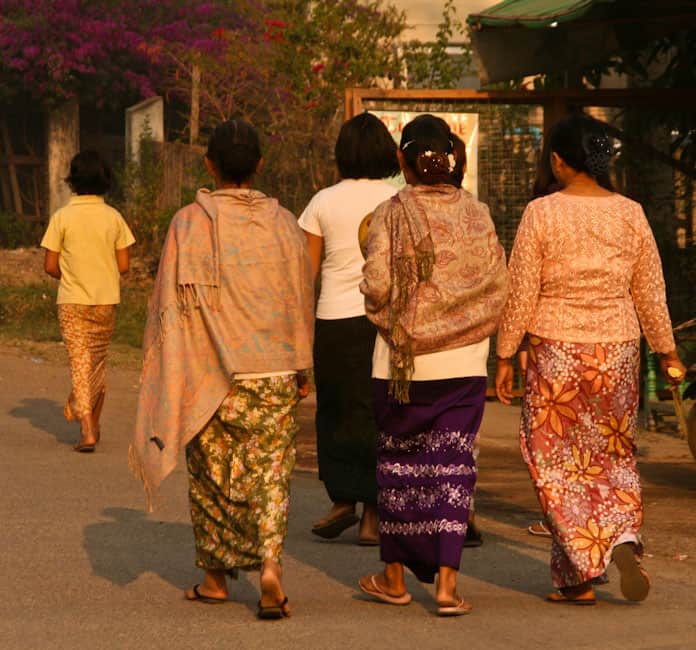
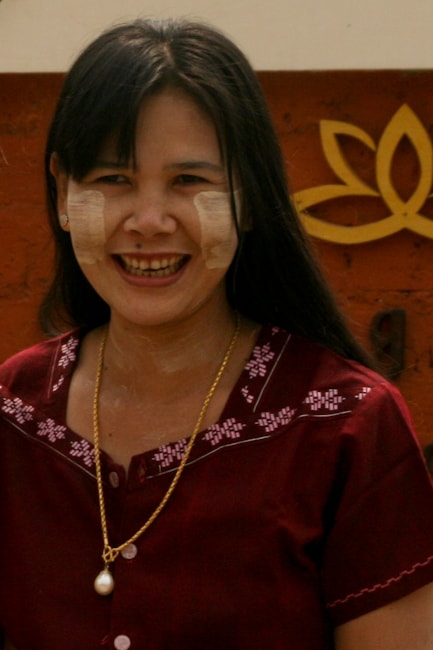
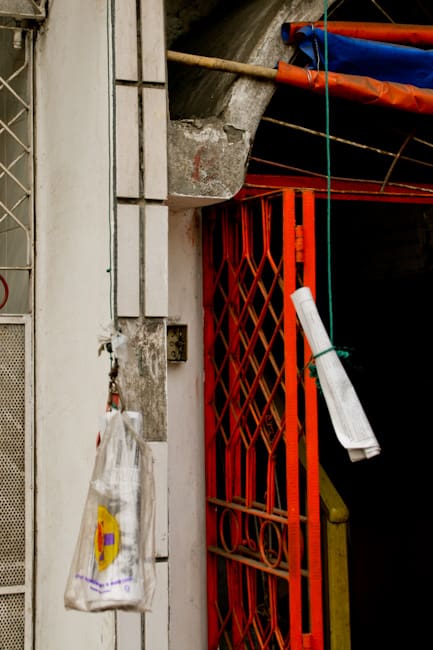
We just came back from Yangon yesterday, having been there for only four days.
There are now ATMs everywhere, and in addition to US dollars, Euros, SGDs, MYRs and Bahts can be exchanged for MKKs. The exchange rates (both buying and selling) are very very reasonable.
I was very impressed with the friendliness and helpfulness of the Myanmar people, and that’s the greatest pleasure I derived from the short trip.
Excellent photos! Just got back from Burma last week. The experience there was amazing! Most things are affordable/cheap and people were very friendly! Will go back there again.
Just so you know people are still reading, and going to Burma. I’m leaving tomorrow, will be at inle lake around 10’th of Nov. Hope to catch the balloon festival from there too. I’ve been wanting to go there for decades, So will be nice to be there at this particular juncture of the countries history. The ATMs and the open land border crossings are all somewhat hard to believe. I was turned away from the day crossing from China near Jinghong in the early 90’s, chinese and burmese only could cross there then. It would be something to be able to travel from Chang Mai up through burma into southern yunnan and them down the Mekong into Laos, nice little loop don’t you think. Maybe you can try it on your next visit in the region?
I am 65 and would like to travel before I get much older. There are so many wonderful places to see but so many are too touristy and spoiled. Your post about Burma is really inspiring me to start planning. Thank you.
I hope you make it to Burma Heather, it is a fascinating country.
Nice little pics and desciptions. I land in Yangon 11/26 this year. How much time did you spend there. Im thinking about 23 days..
We were there for two weeks. 23 days would be great.
I am leaving for Burma in two days and this blog, above all the books and websites I’ve looked at, has gotten me the most excited!! Great job capturing the details that make Burma the unique place that it is. I can’t WAIT to visit. Thanks for sharing your great experiences!
These photos are beautiful. Thanks you for the great overview of Burma.
Amazing photos! I didn’t know much about Burma before I started reading your post and now I feel like I’ve gotten a solid overview. Thanks for posting.
Thanks Mary, glad the post gave you a sense of the country.
Awesome post and amazing photos. You seem to have really captured the mood of the country. And (the best thing of all) you can see your passion for the place coming through. I’ve always wanted to go – but now especially! :)
Thanks!
Such an interesting post! I’m fascinated by the countries that are so closed off from the rest of the world. I’m glad they’re slowly making some progress with their government.
At the very top of my list! I can’t wait to go. Thanks you!
We have a post coming out next week that will help you plan a trip there.
Awesome post and how you present your observations!
This post was absolutely unbelievable! I knew that Burma was on my list as soon as I got to SE Asia, but this post increased my desire to travel their asap!
It’s a great time to visit so I hope you can make it.
Just to say, great post.
Thanks and keep them coming
Phil
Thanks Phil.
Look at all of the awesome comments you have on this post! I love the pictures, just incredible!!! This is definitely a country I hope to visit one day soon.
This was such a well written and insightful commentary about Myanmar I took the liberty of posting a link to it on Fodor’s Forums. I probably should have asked you before doing that. I hope you don’t mind. Brenda
No worries at all – Thanks Brenda.
Love this post with all the various facts and colorful photos. Burma is one of the countries I’m most excited for on my backpacking trip!
Uhh, I have no idea why my email address showed up as my name in the last comment…
Fixed that for you.
I’m just back from 3 weeks in Burma – I loved it; I have not been so amazed by any country for a long time. Inle Lake was my favourite although the best part of the trip were the people: kind, friendly, fun, welcoming, hospitable, intelligent, and great to talk to!
The people and Inle Lake were our favourite parts of Burma too!
This is awesome! Glad I stumbled across your post.
I visited Burma last year it is a fascinating country with friendly people. I hope that they will recover freedom as soon as possible !
Best post yet, and you made it out before David Cameron arrived which is a bonus.
Thanks Gavin. We didn’t know David Cameron had visited but I think it’s a positive sign.
What fascinating observations. I love your posts with these. Can’t wait to head to Cambodia!
Fantastic photos. Love the fisherman poling with one foot.. and all the smiles! Lovely stuff :)
Great photos, looks like an amazing place.
Fascinating stuff! I really learned a lot – I admit I didn’t know much about Burma at all!
Another fantastic blog, again…and great pics! I’m flying to Yangon on Tuesday, so this was a great teaser!
Would you suggest travelling Yangon to Mandalay, Inle Lake and Bagan or the other direction?
Thanks for your insight
We went from Yangon-Bagan-Mandalay-Inle Lake and that route seemed to make sense. Plus it saved the best to last as we absolutely loved Inle.
Another one of your fabulous lists with equally fabulous photos. Loved it and learned a lot too.
Glad you all enjoyed Burma as much as I did! By far the most amazing place in Southeast Asia!
For us,this is a great little teaser for BURMA, MYANMAR or as we say in Spain (Birmania). We’ve heard so much about this magical place, we can’t wait to be there next year! Great pixs and interesting observations! lets hope their political/military situation improves for the sake of the people!
i hate to admit that what i am about to comment about is regarding ‘angry birds,’ but when i showed some kids the ‘angry birds’ game on my droid in yangon they freaked out. they had NO idea it was a game. same thing happened in cambodia.
clearly, the old, wiry farmer in the rice field with a dirty angry birds t-shirt had no idea either.
great post, we so loved this country. it almost hurts to see more photos. glad it all went so well for you two.
I’m not surprised by that due to the lack of iPhones in the country! How bizarre that Angry Birds has spread across SE Asia with most people having no idea what it is!
This is timely – we’re just prepping to visit Myanmar next month. China’s also gone crazy for fake Angry Birds, particularly the pigs!
Burma was beyond my favourite country in Southeast Asia! I loved reminiscing through your post. I trying to think of any further observations about Burma but I can’t! The only thing that is coming to mind is that the women are absolutely enthralled by outside beauty products (the little sample perfumes, nail polish and oddly enough even tiger balm).
Fantastic post – I learned so much about Burma! Love the photos, especially the first one – beautiful. We also came across the Angry Bird craziness in South East Asia: both Malaysia and Cambodia seem to be crazy for Angry Birds – T-shirts, bumper stickers, shoes, pajamas, pillows – anything you can think of ;-)
I love the pics! Why are Angry Birds so popular? They’re crazy popular in the rest of South East Asia, too. It looks like such a wicked country. But it must be slightly annoying with no ATMs…
I have no idea why it’s so popular! We have noticed the t-shirts in Thailand too.
We’ll be writing another post about all the practicalities like money etc. It definitely takes some planning but it wasn’t a problem once we were there.
Great summary. It gave me a really great image of Burma.
Amazing photos! Now to convince Dave to come with me next year….
You should definitely go! It’s not the easiest place to travel but it is rewarding and unlike anywhere else we’ve been.
That tea shop photo reminds of a place that I was stuck in at 3am in Thazi waiting for a bus to Kalaw. Fantastic memories your pics have brought back. Looks just as hot and as I when I was there.
Glad we brought back some memories for you Adam. It was so steaming hot while we were there! The power cuts didn’t help…
This is such a fantastic glimpse into the country! It seems like a great step forward that Aung San Suu Kyi was elected, and I’m hopeful that it will bring a lot of changes politically.
It is a huge step forward but I have a feeling it’s going to be a long process. It’s an exciting time to visit.
I loved this glimpse into the country through photos and tidbits! Burma is one place I cannot wait to get to!! :D
I hope you make it there one day Audrey.